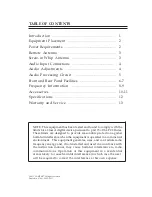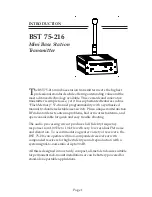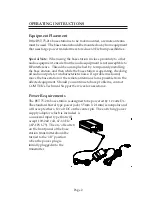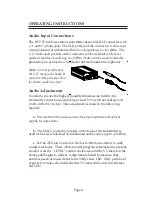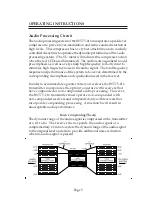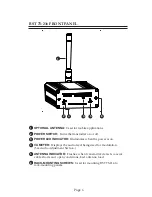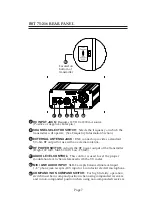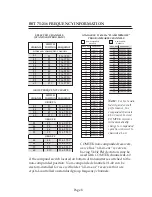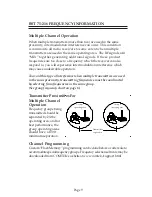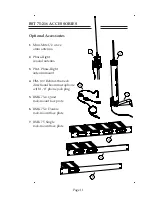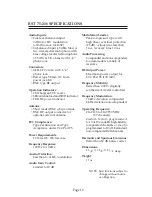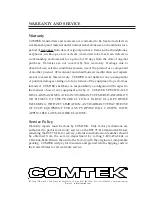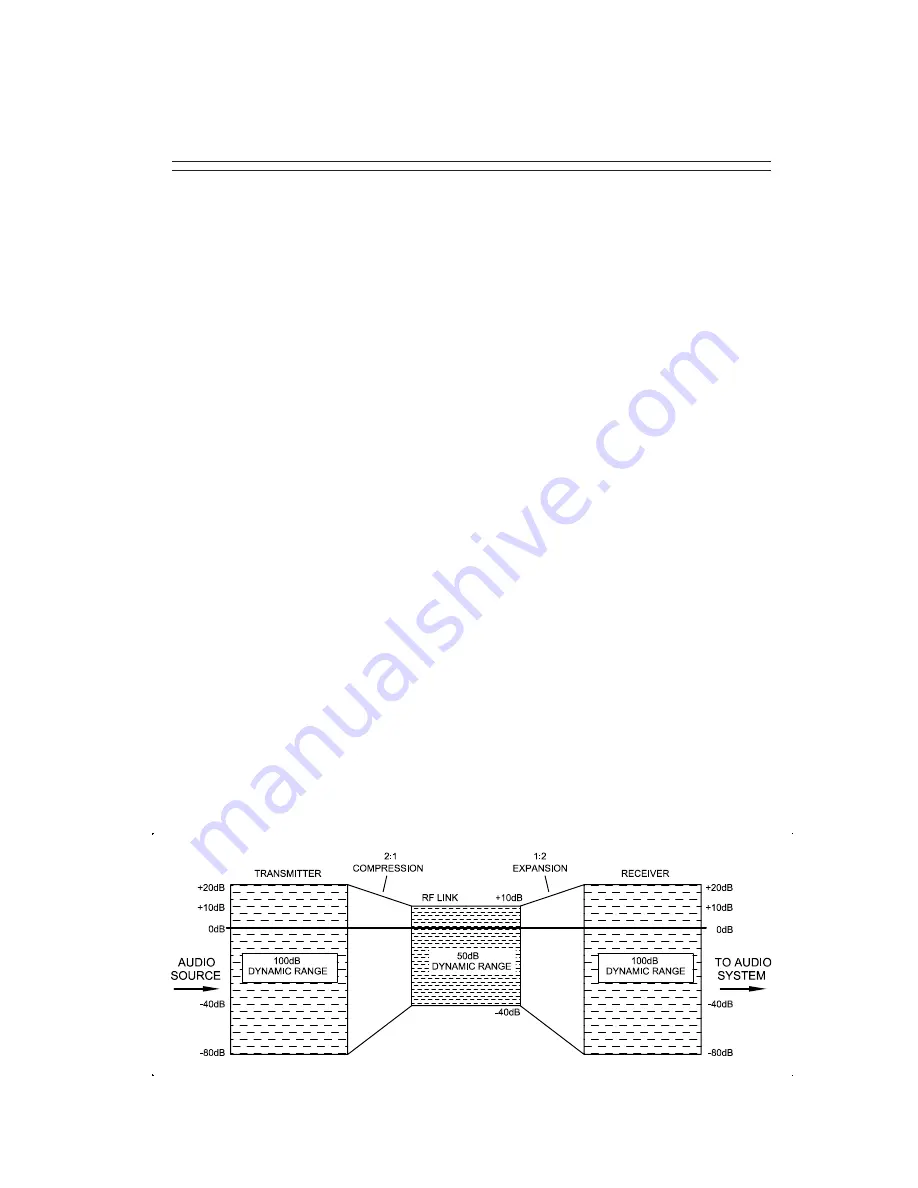
OPERATING INSTRUCTIONS
Audio Processing Circuit
The audio processing system of the BST 75-216 incorporates a peak-level
compressor to prevent over-modulation and reduce audio distortion at
high levels. This compressor has a very fast attack time and a carefully
controlled decay time to optimize the dynamic performance of the audio
processing system. (The VU meter will indicate this compressor action
when the red LEDs are illuminated.) The audio is also equalized to add
pre-emphasis as well as a very sharp high frequency roll-off circuit to
minimize high frequency noise in the audio signal. The total frequency
response and performance of the system is, however, determined by the
corresponding de-emphasis and equalization used in the receiver.
In order to accommodate a greater variety of receivers, the BST 75-216
transmitter incorporates the option to operate with receivers that
have companded or non-companded audio processing. However,
the BST 75-216 transmitter must operate non-companded with
non-companded receivers and companded only with receivers that
incorporate companding processing. A mismatch will result in
unacceptable audio performance.
Basic Companding Theory
The dynamic range of the audio signal is compressed in the transmitter
at a 2:1 ratio. The receiver then expands the audio signal at a
complementary 1:2 ratio to restore the dynamic range of the audio signal
to the original level and also to provide additional noise reduction
when no audio signal is present.
Page 5


